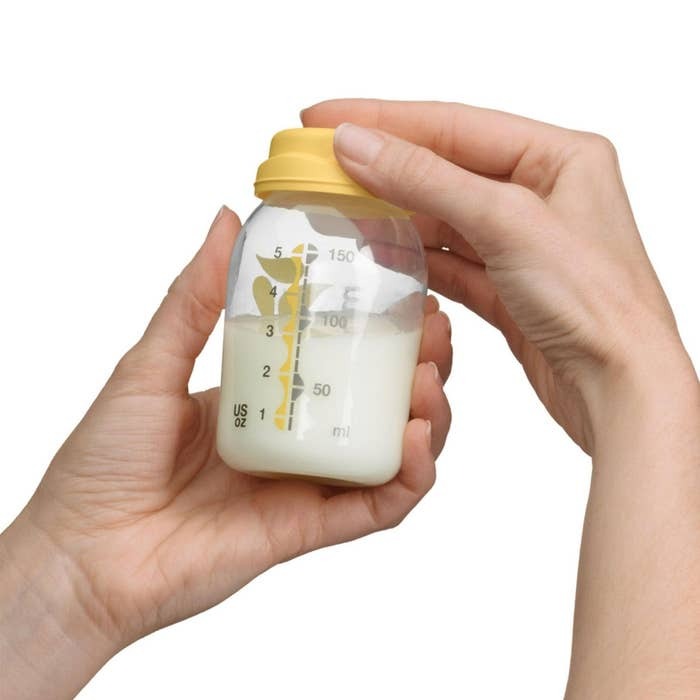Understanding Lactation Suppression
Understanding lactation suppression is key when deciding on how to stop breast milk production. It’s the body’s natural process of decreasing milk supply. This can occur when breastfeeding or pumping is no longer needed or desired. For new mothers, lactation suppression can be challenging both physically and emotionally.
There are several reasons why a mother may choose to stop breast milk production. These include personal choice, returning to work, or medical reasons. It’s important to approach this process with care to maintain comfort and health. It is essential to know that stopping breast milk production should happen gradually. A sudden halt can lead to discomfort and potential complications such as mastitis.
The body naturally regulates milk production through supply and demand. Less demand through reduced breastfeeding or pumping leads to less supply. This mechanism should be utilized to suppress lactation gently and effectively. Finding the right balance between reducing milk production and managing discomfort is crucial. Knowledge about various methods like natural remedies and medical options will support this transition. As you embark on this journey, remember that patience and gradual changes are your allies.
Methods to Gradually Reduce Milk Supply
Gradually reducing breast milk supply is essential for comfort and health. Quick changes can cause engorgement, blocked ducts, or mastitis. Here’s how to ease into the process.
Reducing Breastfeeding Frequency
Start by dropping one breastfeeding session. Try skipping the one your baby seems least interested in. Wait a few days before cutting another. This slow pace helps your body adjust. Keep comfort in mind, as abrupt changes can spur discomfort.
Spread out the time between feeds. Extended intervals signal your body to produce less milk. Keep close track of your baby’s response and needs. Babies adapt differently, so stay flexible with your plan.
Reducing Pumping Sessions
Reducing pumping mirrors the approach with breastfeeding. Cut down pumping time gradually. Shave off a few minutes from each session or pump once less per day. Pay attention to your body’s cues. Discomfort means you may be going too fast.
Use a gentle pump setting. Harsher settings can stimulate more production. Aim for a balance between relief and maintaining supply. Remember, patience is key during this change. Following these steps safely decreases breast milk production.
Natural Remedies to Suppress Lactation

Turning to natural remedies can offer gentle support when you’re figuring out how to stop breast milk. These methods can promote comfort and align well with gradual lactation suppression.
Herbs and Teas
Nature provides several herbs that may help reduce breast milk production. Drinking certain teas could also support this process. Sage tea, for example, is often recommended due to its natural properties that can decrease milk supply. Other herbs like peppermint and parsley are believed to offer similar benefits. Start with one cup a day and observe how your body responds. Moderation is key to ensure a safe and gradual reduction.
Dietary Changes
What you eat impacts your lactation. Some foods encourage milk production, while others can help reduce it. To suppress lactation, consider limiting lactogenic foods such as oats, barley, and fennel. Incorporate more lean meats, vegetables, and nuts, which do not promote lactation. Remember to pay attention to your overall nutrition during this time. A balanced diet will support your body’s health as you reduce your milk supply.
Medicinal Options for Stopping Breast Milk
When natural remedies and gradual weaning aren’t enough, medicine can help suppress breast milk. Always consult a doctor before starting any medication.
Prescription Medications
Doctors might prescribe medications to aid in stopping breast milk. Common options include dopamine agonists. These drugs reduce prolactin, the hormone that signals the body to make milk. Side effects can happen, so talk to a healthcare provider. They can explain risks and guide usage.
Before using prescription drugs, consider the impact on your health. Weigh pros and cons with your doctor. This ensures a safe and informed decision. Note that some drugs are not suitable for all women. Your medical history influences what medication is best.
Over-the-Counter Solutions
Some over-the-counter products can also support milk suppression. Decongestants, for instance, might reduce supply as a side effect. They shrink tissues and may decrease milk production. However, results vary, and not all mothers experience this effect.
Natural supplements are available too. They often have ingredients like those found in suppression teas. These include sage, peppermint, and others. Read labels carefully. Check that nothing conflicts with personal health conditions. It is vital to always check with a doctor before trying over-the-counter solutions.
Physical Techniques to Ease Discomfort

Physical methods can also reduce discomfort when stopping breast milk production.
Cold Compresses
Cold compresses may provide much-needed relief. Place a cold pack or a cloth wrapped ice on your breasts. This can help reduce swelling and pain. Apply it for comfortable time spans throughout the day. Remember to protect your skin from direct ice contact.
Supportive Bras
Wear a well-fitted, supportive bra. Avoid underwire styles that might compress milk ducts. Choose a bra that’s snug but not too tight. The support helps manage discomfort from engorgement as you reduce milk supply. During nighttime, a soft cotton bra can provide comfortable support. Ensure to switch to fresh bras regularly to maintain hygiene.
Importance of Emotional Support During Weaning
Weaning is not just a physical process but an emotional journey too. During this time, emotional support is vital.
Lean on Your Social Circle
Talk to friends and family. Share feelings and seek their encouragement. Having someone to confide in makes a difference.
Join Support Groups
Connect with others going through similar experiences. Support groups offer advice, comfort, and a sense of community.
Consult with Your Partner
Discuss weaning plans with your partner. Their understanding and help can ease the transition.
Be Gentle with Yourself
Remind yourself that it’s normal to feel a range of emotions. Be patient and kind to yourself. Take care of your mental health. Prioritize rest and relaxation.
Seek Professional Help if Needed
If emotions run deep or become overwhelming, consider talking to a professional. A counselor or therapist can provide strategies for coping.
Remember, the decision on how to stop breast milk is deeply personal. Emotional support is as important as the physical steps you take. Lean on others, and be deliberate about self-care to navigate this period.
When to Consult a Healthcare Professional

While most methods for how to stop breast milk can be done at home, professional advice is sometimes necessary. If discomfort persists or complications like mastitis develop, seek medical attention. A healthcare professional can provide specific guidance, tailored to your body’s needs.
Signs You Should Seek Medical Help
Notice these signs? It might be time to consult a doctor:
- Fever or flu-like symptoms which could indicate infection.
- Persistent pain or redness in breasts not relieved by home remedies.
- Signs of mastitis, including tender lumps or discharge that is bloody or pus-like.
- Any concerns about the medications you are taking for lactation suppression.
Remember, doctors are there to help you through this transition. They can answer your questions, offering peace of mind and expert care. Listen to your body and do not hesitate to get help if you need it.
Conclusion: Personalized Approaches to Stop Breast Milk
- Evaluating Personal Needs and Goals: Every mother’s situation is unique, and the approach to how to stop breast milk should reflect personal health, lifestyle, and emotional needs. Whether the process is driven by medical necessity or personal choice, understanding that there is no one-size-fits-all solution is key.
- Integrating Professional Guidance: Working closely with healthcare professionals ensures that all chosen methods align with personal health conditions and goals. This coordinated approach can prevent complications and provide a framework for safe and effective lactation cessation.
- Embracing Flexibility and Adaptation: The process of stopping breast milk may require adjustments along the way. Being open to changing techniques and timelines can relieve pressure and ensure that the mother’s and baby’s needs are respected and met.
- Focusing on Positive Outcomes: Remembering that this transition is a step toward new beginnings can help frame the process positively. Embracing this change with patience and support can lead to a smooth transition and help mothers feel empowered about their decision on how to stop breast milk.